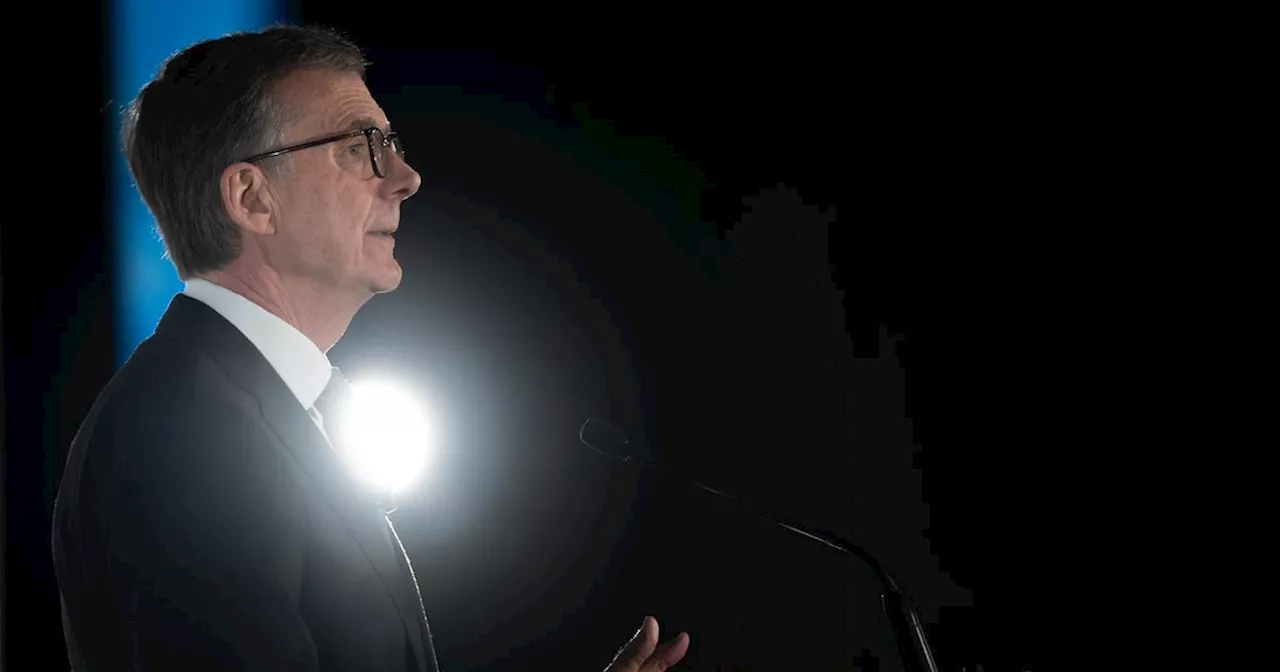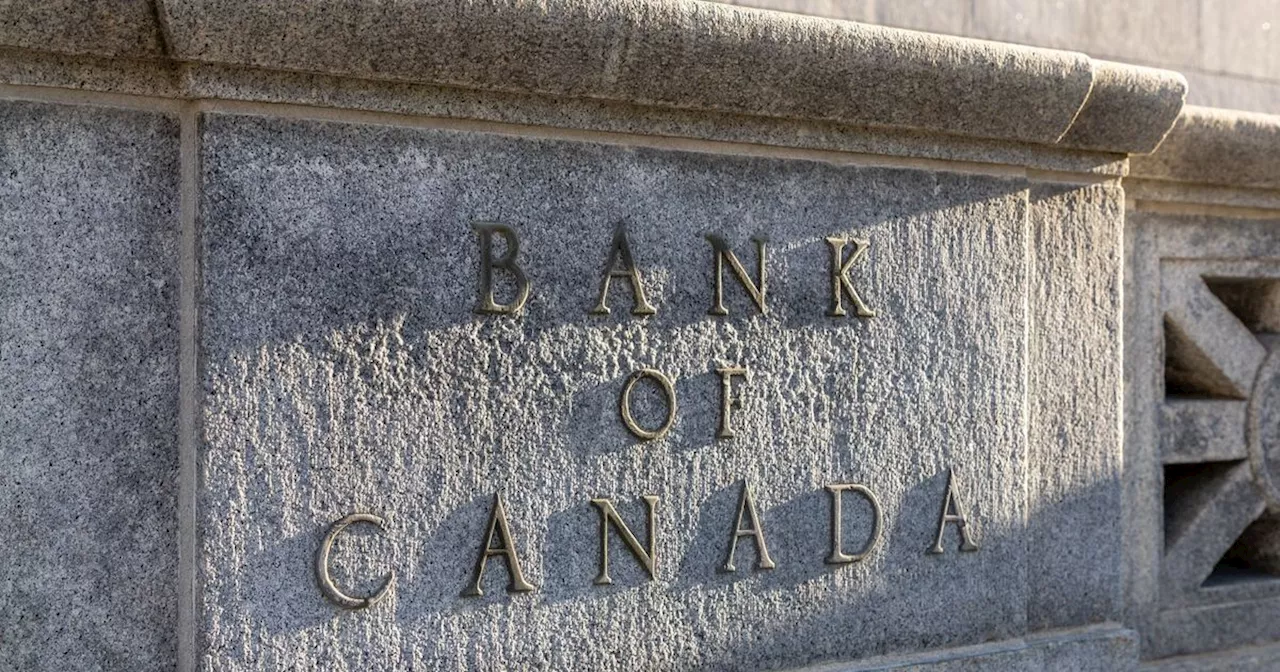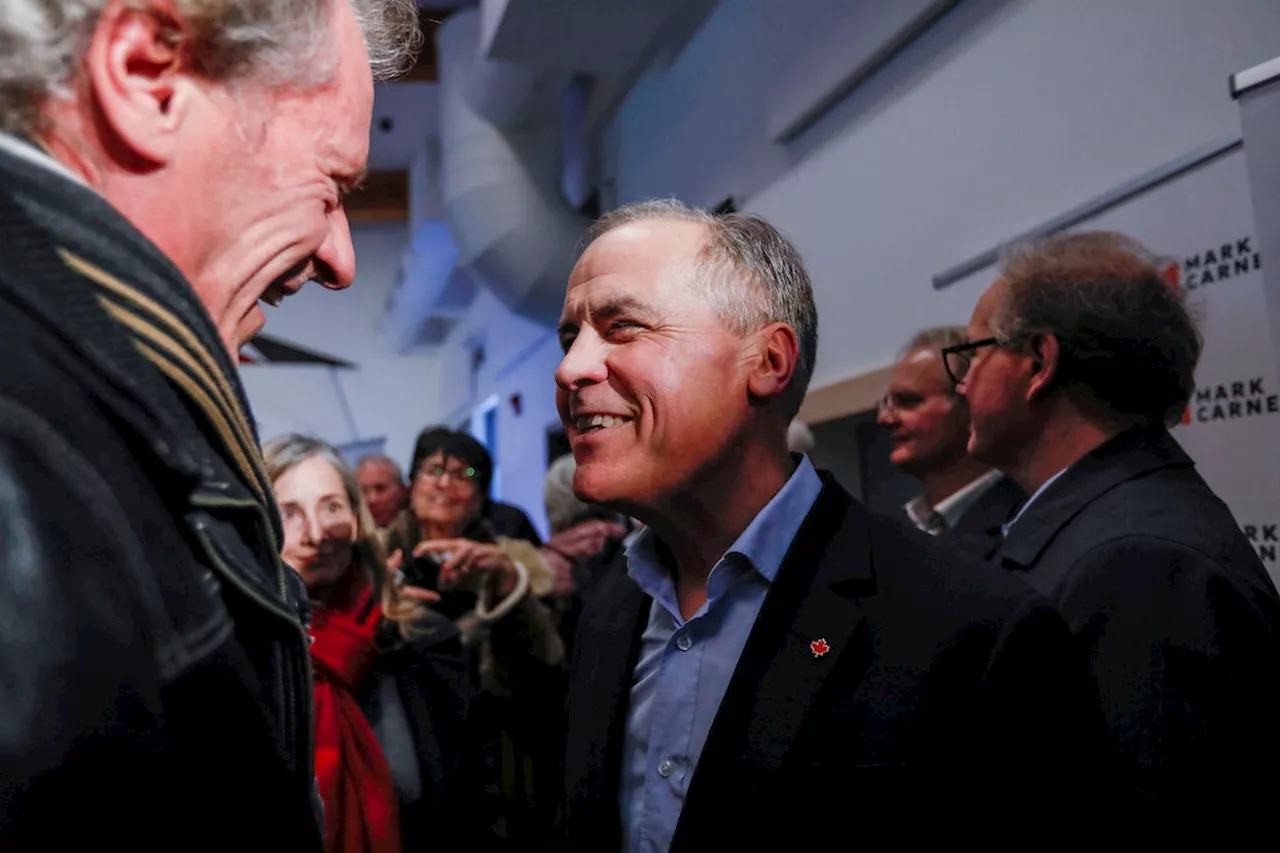The Bank of Canada cut its key lending rate, while the U.S. Federal Reserve is expected to hold rates steady, widening the interest rate gap between the two countries. Experts say this divergence, while putting downward pressure on the Canadian dollar, is driven by the Bank of Canada's concern over potential U.S. tariffs and their impact on the Canadian economy.
The interest rate gap between Canada and the United States is poised to widen further as the Bank of Canada reduced its key lending rate by a quarter-point on Wednesday, while the U.S. Federal Reserve is anticipated to maintain rates steady later today. Experts contend that despite the growing divergence, which exerts downward pressure on the Canadian dollar, the Bank of Canada is more preoccupied with the looming threat of U.S. tariffs and their potential impact on the Canadian economy.
The Bank of Canada's overnight rate now stands at three percent, following a series of aggressive cuts commencing in June of the previous year, bringing it down from a peak of five percent. In contrast, the U.S. Federal Reserve is widely expected to hold its key rate unchanged on Wednesday, as the U.S. economy has demonstrated greater resilience in the face of higher interest rates. The Federal Reserve implemented three rate cuts last year, resulting in a rate range of 4.25 percent to 4.5 percent — more than a full percentage point higher than its Canadian counterpart. BMO senior economist Shelly Kaushik anticipates the Bank of Canada will implement two more rate cuts this year, further expanding the gap. Kaushik states that this divergence is among the primary factors undermining the Canadian dollar, which has traded below 70 cents U.S. for over a month. She observes that if this gap persists or even intensifies, it will likely continue to exert downward pressure on the loonie's value. However, Kaushik emphasizes that the imminent threat of tariffs is currently a more pressing concern for the Bank of Canada. U.S. President Donald Trump has threatened to impose sweeping tariffs on Canadian goods as early as Saturday, a move economists warn could inflict significant damage on the Canadian economy. Wednesday's rate cut is perceived as an attempt by the bank to establish a buffer for the Canadian economy. Mackenzie Investments senior economist Jules Boudreau believes the disparity between the two central banks is here to stay due to the fundamental differences in the economic structures of the two countries. He suggests that over the next decade, we may witness a one to two percent spread between the Bank of Canada rate and the Federal Reserve rate. Boudreau notes that this divergence hasn't been observed in recent decades because the economies of Canada and the United States were more closely aligned. A TD Economics report from May 2024 indicates that the last instance of a substantial gap between the two countries' interest rates lasting for an extended period was between 2003 and 2006. During that time, the Federal Reserve raised rates to curb U.S. economic growth amid surging real estate prices. Historically, a one-percentage-point spread has been deemed sustainable, the report states, noting that in early 1997, the gap between the two rates reached 2.5 percentage points. Kaushik acknowledges that the current wide gap between policy rates is unusual. Both the Bank of Canada and the Federal Reserve implemented interest rate hikes to address inflation emerging from the pandemic. However, factors such as shorter mortgage terms and higher consumer debt in Canada led to a faster weakening of the domestic economy under higher rates, Kaushik explains. Apart from the impact of higher interest rates on the economy, Canada faces slowing population growth and a projected decrease in government deficits if the federal Conservatives assume power, while the Trump administration is poised for increased spending, according to Boudreau. He argues that even before the tariff threat, a gap between the two rates would have been necessary due to the significant difference in economic strength between the two countries. With the possibility of U.S. tariffs looming, the Bank of Canada finds itself in a precarious position, states Edward Jones senior investment strategist Angelo Kourkafas. He notes that if the loonie weakens further, it could fuel inflation, but adds that current levels are not cause for extreme concern. Kourkafas believes there are no immediate worries that the divergence is triggering another wave of inflation or significantly affecting financial markets. Kaushik believes it's challenging to predict rate movements beyond this year due to the prevailing uncertainty, but anticipates further widening in the short term. She contends that while U.S. tariffs and retaliatory measures from Canada would be inflationary, tariffs would also significantly impact Canadian economic growth. Kaushik concludes that the negative impact on growth would likely outweigh any inflationary effects, at least in the short term, suggesting that the Bank of Canada's policy risk lies in rates potentially falling even lower or more quickly than anticipated
INTEREST RATES BANK OF CANADA US FEDERAL RESERVE CANADIAN DOLLAR TARIFFS ECONOMY INFLATION GLOBAL MARKETS
Canada Latest News, Canada Headlines
Similar News:You can also read news stories similar to this one that we have collected from other news sources.
 Bank of Canada Cuts Interest Rates as Trade War Concerns LoomThe Bank of Canada has cut interest rates for a sixth consecutive time, citing persistent inflation around two percent and the threat of U.S. tariffs. While the rate cut was not directly influenced by tariffs, the Bank of Canada acknowledges the uncertainty surrounding a potential trade war. Governor Tiff Macklem stated that tariffs would negatively impact the Canadian economy and that monetary policy alone cannot offset their effects.
Bank of Canada Cuts Interest Rates as Trade War Concerns LoomThe Bank of Canada has cut interest rates for a sixth consecutive time, citing persistent inflation around two percent and the threat of U.S. tariffs. While the rate cut was not directly influenced by tariffs, the Bank of Canada acknowledges the uncertainty surrounding a potential trade war. Governor Tiff Macklem stated that tariffs would negatively impact the Canadian economy and that monetary policy alone cannot offset their effects.
Read more »
 Bank of Canada Cuts Interest Rate by 50 Basis Points to 3.25%The Bank of Canada (BoC) has unexpectedly lowered its key interest rate by 50 basis points to 3.25% in its fifth and final major announcement of the year. The decision comes after Canada's unemployment rate rose to 6.8%, a near eight-year high. While experts predicted a 0.25% cut, the BoC cited increased consumer spending and housing activity as indicators that lower interest rates are stimulating household spending. The BoC also noted that inflation is around 2% and the economy is operating with excess supply, leading to softer growth than projected.
Bank of Canada Cuts Interest Rate by 50 Basis Points to 3.25%The Bank of Canada (BoC) has unexpectedly lowered its key interest rate by 50 basis points to 3.25% in its fifth and final major announcement of the year. The decision comes after Canada's unemployment rate rose to 6.8%, a near eight-year high. While experts predicted a 0.25% cut, the BoC cited increased consumer spending and housing activity as indicators that lower interest rates are stimulating household spending. The BoC also noted that inflation is around 2% and the economy is operating with excess supply, leading to softer growth than projected.
Read more »
 Former Bank of Canada Governor Mark Carney Launches Bid for Canadian Prime MinistershipMark Carney, former governor of both the Bank of Canada and the Bank of England, officially announced his candidacy for the leadership of the Liberal Party and Prime Minister of Canada. He positions himself as an outsider and an unconventional politician who can address the systemic issues facing Canadians. Carney faces competition from Chrystia Freeland, Karina Gould, Jaime Battiste, Chandra Arya, and Frank Baylis. The Liberal Party will elect its next leader on March 9th.
Former Bank of Canada Governor Mark Carney Launches Bid for Canadian Prime MinistershipMark Carney, former governor of both the Bank of Canada and the Bank of England, officially announced his candidacy for the leadership of the Liberal Party and Prime Minister of Canada. He positions himself as an outsider and an unconventional politician who can address the systemic issues facing Canadians. Carney faces competition from Chrystia Freeland, Karina Gould, Jaime Battiste, Chandra Arya, and Frank Baylis. The Liberal Party will elect its next leader on March 9th.
Read more »
 Bank of Canada Expected to Lower Interest Rate by Quarter PointEconomic forecasts predict the Bank of Canada will decrease its key policy rate by 0.25 percentage points on Wednesday, reaching three percent. This move would follow two substantial rate reductions in October and December. The decision is influenced by recent inflation and job data, with Canada's annual inflation rate declining to 1.8 percent in December. Despite potential justifications for a rate pause, the looming threat of U.S. tariffs on Canadian goods is likely to prompt a modest cut.
Bank of Canada Expected to Lower Interest Rate by Quarter PointEconomic forecasts predict the Bank of Canada will decrease its key policy rate by 0.25 percentage points on Wednesday, reaching three percent. This move would follow two substantial rate reductions in October and December. The decision is influenced by recent inflation and job data, with Canada's annual inflation rate declining to 1.8 percent in December. Despite potential justifications for a rate pause, the looming threat of U.S. tariffs on Canadian goods is likely to prompt a modest cut.
Read more »
 Bank of Canada Interest Rate Decision Looms Amid Uncertainty and Mixed SignalsEconomists anticipate a 25 basis-point cut, but trade tariffs and mixed economic data complicate the Bank of Canada's decision. The central bank will announce its next rate on January 29th.
Bank of Canada Interest Rate Decision Looms Amid Uncertainty and Mixed SignalsEconomists anticipate a 25 basis-point cut, but trade tariffs and mixed economic data complicate the Bank of Canada's decision. The central bank will announce its next rate on January 29th.
Read more »
 Bank of Canada to Announce First Interest Rate Decision of 2025The Bank of Canada is set to make its first interest rate announcement of the year, with expectations for a further decrease bringing the key rate to three percent. The decision follows recent positive economic indicators, including a drop in the unemployment rate and a decline in inflation.
Bank of Canada to Announce First Interest Rate Decision of 2025The Bank of Canada is set to make its first interest rate announcement of the year, with expectations for a further decrease bringing the key rate to three percent. The decision follows recent positive economic indicators, including a drop in the unemployment rate and a decline in inflation.
Read more »
